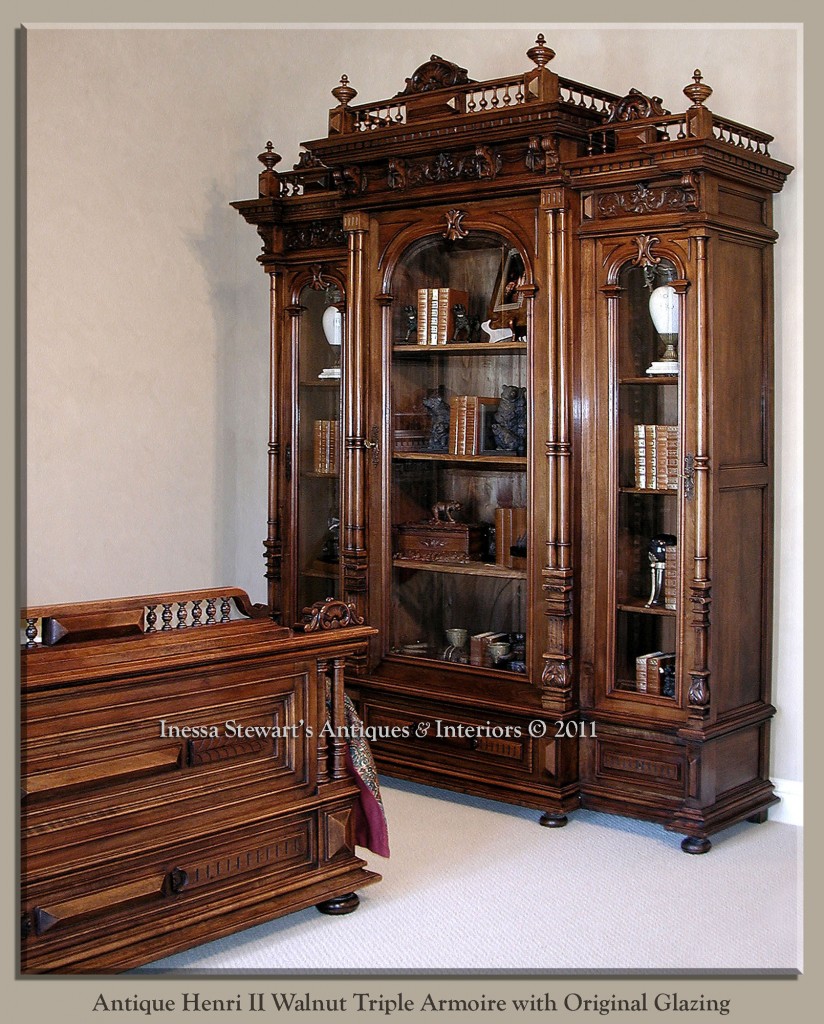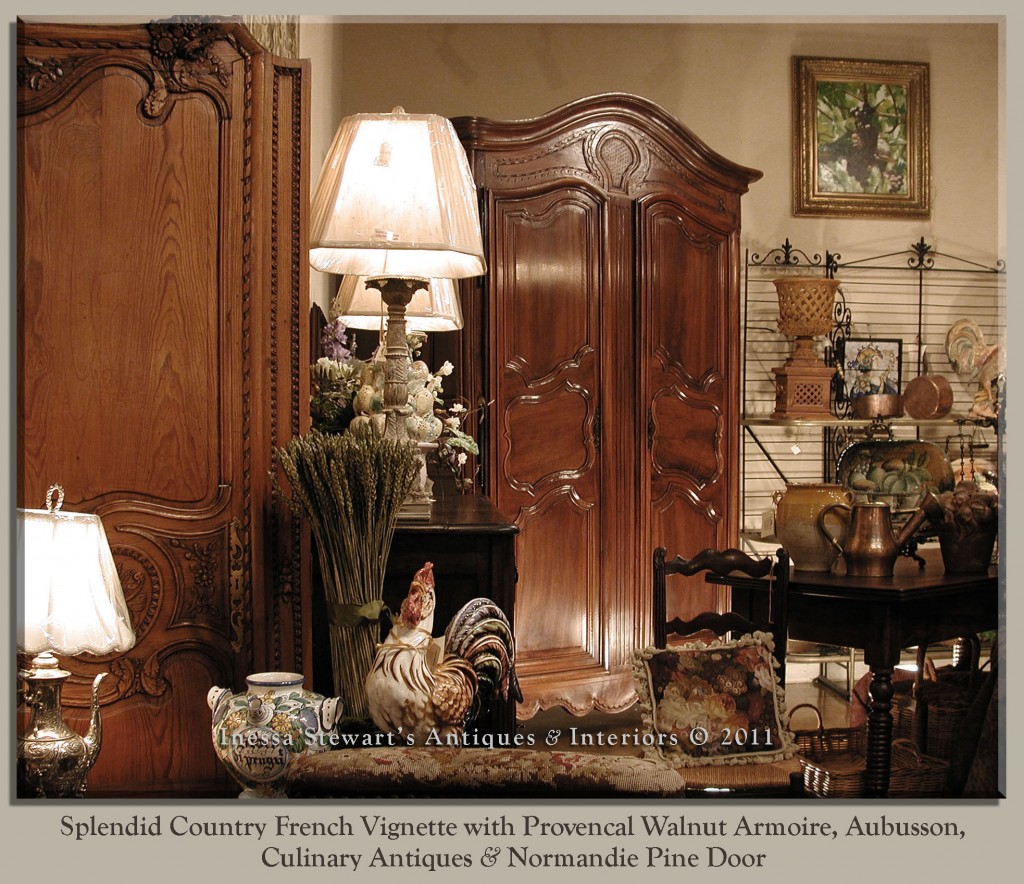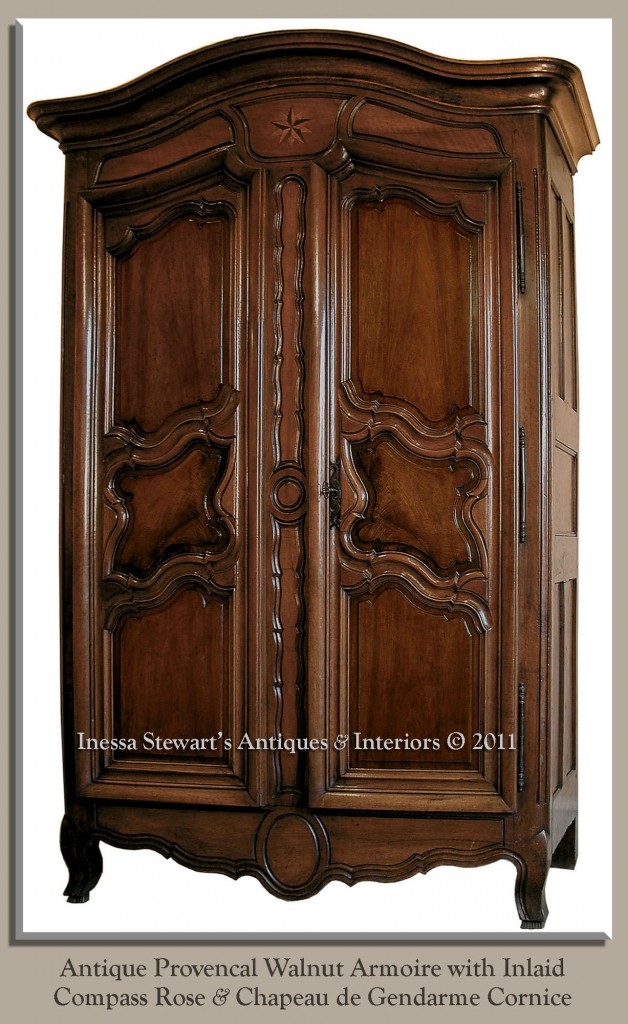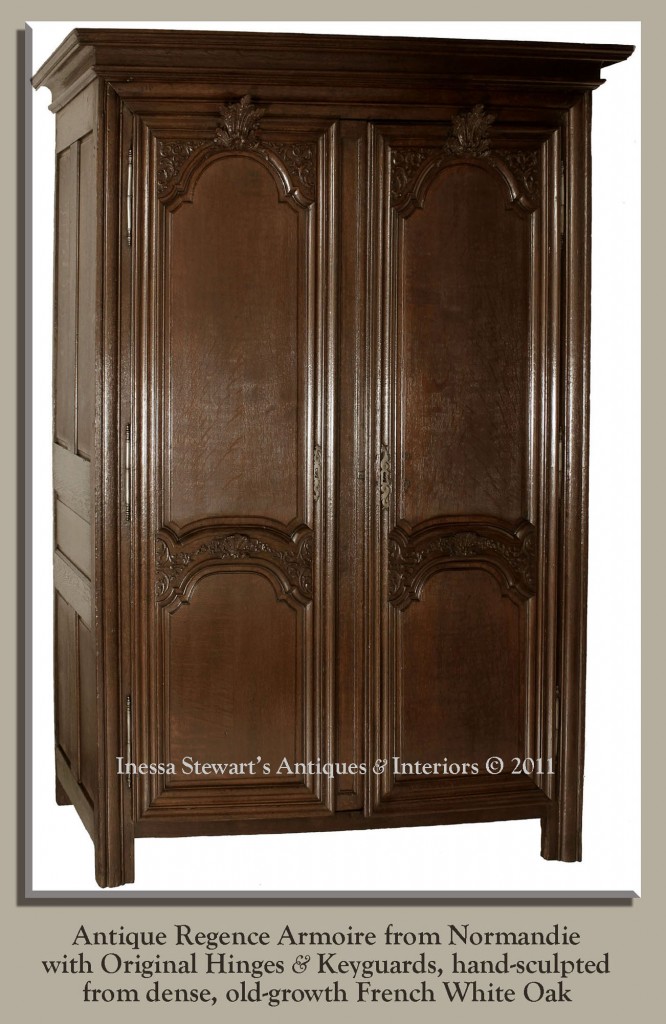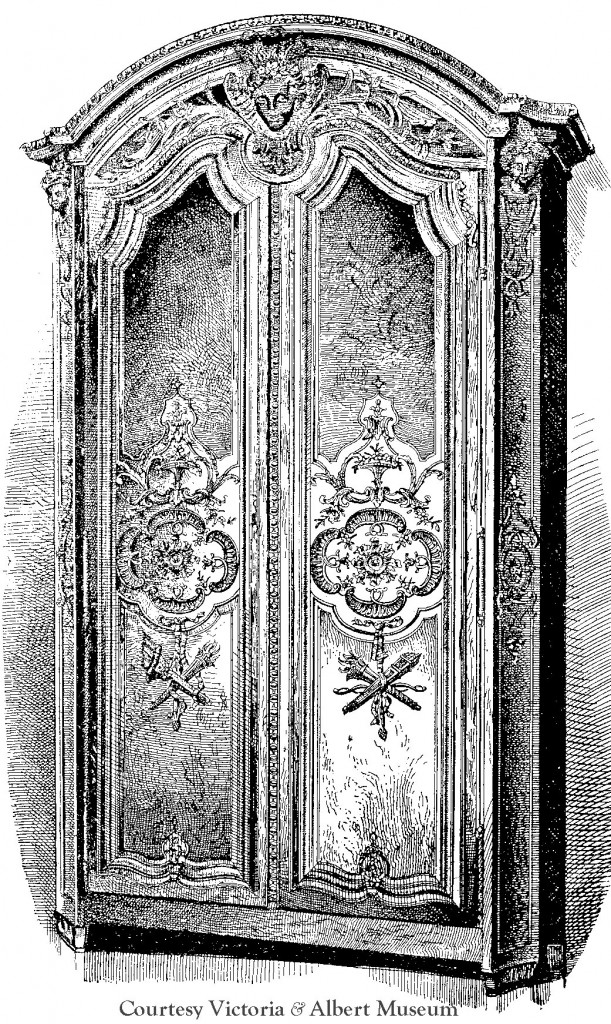 The earliest antique armoires had a regal beginning, born in the royal palaces and castles of powerful European nobility and kings. The armoire was a descendant of the Antique Chest or Coffre, evolving in Medieval and early Renaissance times to become one of the most important pieces of furniture during the 17th century and beyond.
The earliest antique armoires had a regal beginning, born in the royal palaces and castles of powerful European nobility and kings. The armoire was a descendant of the Antique Chest or Coffre, evolving in Medieval and early Renaissance times to become one of the most important pieces of furniture during the 17th century and beyond.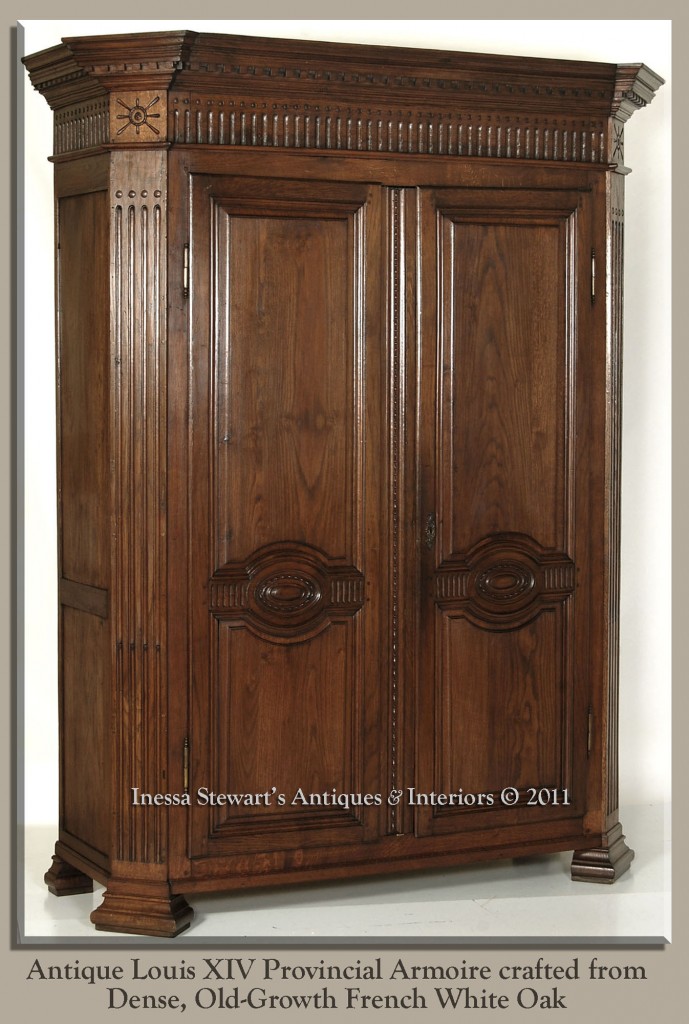 There is evidence that the first appearance of the word “Armoire” was during the 16th century. The French name of “Armoire” evolved from the Latin word “Armarium” – which referred to a Roman closet or chest for armor or weapons – and from the French word “Arma” -meaning gear, tools and arms. Therefore it is strange but true that these large cupboards were originally used to store armor and weapons, first gaining popularity at the end of the 1500’s.
There is evidence that the first appearance of the word “Armoire” was during the 16th century. The French name of “Armoire” evolved from the Latin word “Armarium” – which referred to a Roman closet or chest for armor or weapons – and from the French word “Arma” -meaning gear, tools and arms. Therefore it is strange but true that these large cupboards were originally used to store armor and weapons, first gaining popularity at the end of the 1500’s.
We assume that astute and ingenious Frenchmen turned the coffre on it side – and voila, the armoire was born! In the 17th century simple, easily transported medieval trunks served first as personal appointments, later evolving into lavishly embellished wardrobes. The elaborate formal French armoires designed by Andre-Charles Boulle, famous cabinetmaker to Louis XIV, are among the most magnificent and opulent pieces of antique French furniture of that era.
The French armoire played an essential role in the 18th century home as one of the finest
possessions of an estate. The renowned Armoire du Marriage was designed as a part of a dowry, richly carved with romantic motives to bless the upcoming nuptials. During this period, Country French armoires were primarily constructed from local woods reflecting the styles of the various French provinces.
The patina of fruitwood chapeau de gendarme armoires from Rennes and Toulouse lie in stark contrast to the oak armoires of Normandie with their trademark richness of carved embellishment.
The romantic walnut Country French armoires from Arles, exceptionally carved with love birds, took their cue from the French court of Louis XV. In contrast, the massive Lyonaise armoires of similar periods typically featured heavy moldings, raised panels, and occasional baroque carvings, drew their style from the courts of Louis XIII and Louis XIV. Throughout history artisans from France excelled to produce remarkable works of art especially in the form of French antique armoires, leaving no wonder why the French preserved these most personal treasures with such great affection. How fortunate that we can acquire these instant heirlooms and relish them, enjoying their use for generations to come! 

